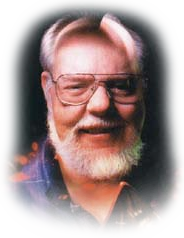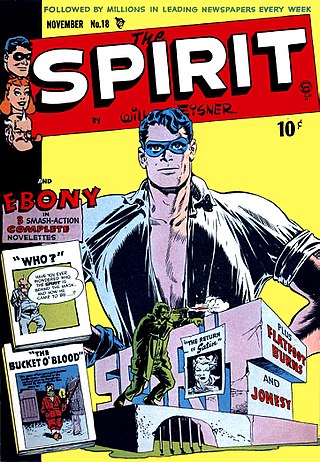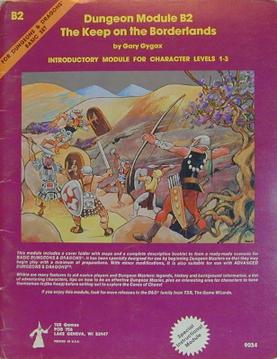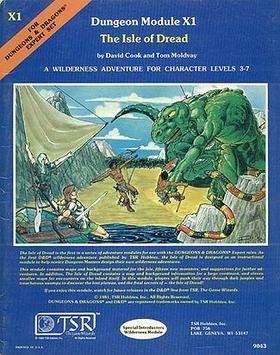Related Research Articles

Call of Cthulhu is a horror fiction role-playing game based on H. P. Lovecraft's story of the same name and the associated Cthulhu Mythos. The game, often abbreviated as CoC, is published by Chaosium; it was first released in 1981 and is in its seventh edition, with licensed foreign language editions available as well. Its game system is based on Chaosium's Basic Role-Playing (BRP) with additions for the horror genre. These include special rules for sanity and luck.

Dungeons & Dragons is a fantasy tabletop role-playing game (RPG) originally designed by Gary Gygax and Dave Arneson. The game was first published in 1974 by Tactical Studies Rules, Inc. (TSR). It has been published by Wizards of the Coast since 1997. The game was derived from miniature wargames, with a variation of the 1971 game Chainmail serving as the initial rule system. D&D's publication is commonly recognized as the beginning of modern role-playing games and the role-playing game industry, and also deeply influenced video games, especially the role-playing video game genre.

Villains and Vigilantes is a superhero-themed role-playing game which competed primarily with Champions and Superworld in the early to mid-1980s.

David Lance Arneson was an American game designer best known for co-developing the first published role-playing game (RPG), Dungeons & Dragons, with Gary Gygax, in the early 1970s. Arneson's early work was fundamental to the development of the genre, developing the concept of the RPG using devices now considered to be archetypical, such as adventuring in dungeons and using a neutral judge who doubles as the voice and consciousness of all characters aside from the player characters to develop the storyline.

The Dungeon Master's Guide is a book of rules for the fantasy role-playing game Dungeons & Dragons. The Dungeon Master's Guide contains rules concerning the arbitration and administration of a game, and is intended for use by the game's Dungeon Master.

Top Secret is an espionage-themed tabletop role-playing game written by Merle M. Rasmussen and first published in 1980 by TSR, Inc.

The Spirit is a fictional masked crimefighter created by cartoonist Will Eisner. He first appeared June 2, 1940, as the main feature of a 16-page, tabloid-sized, newsprint comic book insert distributed in the Sunday edition of Register and Tribune Syndicate newspapers; it was ultimately carried by 20 Sunday newspapers, with a combined circulation of five million copies during the 1940s. "The Spirit Section", as the insert was popularly known, continued until October 5, 1952. It generally included two other four-page strips, plus filler material. Eisner, the overall editor, wrote and drew most Spirit entries, with the uncredited assistance of his studio of assistants and collaborators, though with Eisner's singular vision a unifying factor.

The Keep on the Borderlands is a Dungeons & Dragons adventure module by Gary Gygax, first printed in December 1979. In it, player characters are based at a keep and investigate a nearby series of caves that are filled with a variety of monsters. It was designed to be used with the Dungeons & Dragons Basic Set, and was included in the 1979–1982 editions of the Basic Set. It was designed for people new to Dungeons & Dragons.

Oriental Adventures is the title shared by two hardback rulebooks published for different versions of the Dungeons & Dragons (D&D) fantasy roleplaying game. Each version of Oriental Adventures provides rules for adapting its respective version of D&D for use in campaign settings based on the Far East, rather than the medieval Europe-setting assumed by most D&D books. Both versions of Oriental Adventures include example campaign settings.

Scourge of the Slave Lords (A1–4) is an adventure module for the Dungeons & Dragons fantasy role-playing game, published by TSR, Inc. in 1986. It combines the contents of four earlier modules, all set in the World of Greyhawk campaign setting and intended for use with Advanced Dungeons & Dragons first edition rules.

Descent Into the Depths of the Earth is an adventure module for the Dungeons & Dragons (D&D) fantasy roleplaying game coded D1–2. It was written by Gary Gygax, and combines two previously published modules from 1978, the original Descent into the Depths of the Earth and Shrine of the Kuo-Toa. A sequel to the first two modules, Vault of the Drow, was also published in 1978. All of these D-series modules were produced for use with the 1st edition Advanced Dungeons & Dragons (AD&D) rules.

Polymancer was a magazine covering roleplaying games and related hobbies such as miniatures, wargaming, and LARPs. The magazine was published in Canada by Polymancer Studios Inc. It was distributed across the United States, across Canada, in the UK, in Australia, and in New Zealand, as well as having hard copies archived with Archives Canada. The first issue was published in 2004 and it ran for 32 issues.

The Hidden Shrine of Tamoachan is an adventure module for the Dungeons & Dragons (D&D) fantasy role-playing game, set in the World of Greyhawk campaign setting for use with the 1st edition Advanced Dungeons & Dragons rules. It is the first in the C-series of modules, a set of unrelated adventures originally designed for competitive play, with the C representing the first letter in the word competition.
James Paul Roslof was an American artist who produced cover art and interior illustrations of fantasy role-playing games published by TSR, Inc. during the "golden age" of Dungeons & Dragons. As Art Director at TSR in the early 1980s, he was also responsible for hiring many of the young artists who would go on to careers in the fantasy role-playing industry.

The Isle of Dread is an adventure for the Dungeons & Dragons role-playing game. The adventure, module code X1, was originally published in 1981. Written by David "Zeb" Cook and Tom Moldvay, it is among the most widely circulated of all Dungeons & Dragons adventures due to its inclusion as part of the D&D Expert Set. In the adventure, the player characters search for a lost treasure, journey to the prehistoric Isle of Dread, and there meet new nonhuman races.

David "Zeb" Cook is an American game designer, best known for his work at TSR, Inc., where he was employed for over fifteen years. Cook designed several games, wrote the Expert Set for Dungeons & Dragons, worked as lead designer of the second edition of Advanced Dungeons & Dragons, and invented the Planescape setting for AD&D. He is a member of the Origins Hall of Fame.

Jennell Jaquays is an American game designer, video game artist, and illustrator of tabletop role-playing games (RPGs). Her notable works include the Dungeons & Dragons modules Dark Tower and Caverns of Thracia for Judges Guild; the development and design of conversions on games such as Pac-Man and Donkey Kong for Coleco's home arcade video game system; and more recent design work, including the Age of Empires series, Quake 2, and Quake III Arena. One of her best known works as a fantasy artist is the cover illustration for TSR's Dragon Mountain adventure.

The Expert Set is an expansion boxed set for the Dungeons & Dragons fantasy role-playing game. It was first published in 1981 as an expansion to the Basic Set.
Dungeons & Dragons retro-clones are fantasy role-playing games that emulate earlier editions of Dungeons & Dragons (D&D) no longer supported by Wizards of the Coast. They are made possible by the release of later editions' rules in a System Reference Document under the terms of the Open Game License, which allow the use of much of the proprietary terminology of D&D that might otherwise collectively constitute copyright infringement. However, as per the license, these games lack the brand names Dungeons & Dragons, D&D, and all the other trademarks associated with those brands.

Lawrence Schick is a game designer and writer associated with role-playing games.
References
- 1 2 3 4 5 Cook, David (March 1981). "Crimefighters" (PDF). Dragon . rollenspiel-almanach.de (47).
- ↑ "Crimefighters". onedrive.live.com. Archived from the original on 2015-11-26. Retrieved 2015-11-26.
- ↑ "Crimefighters!". stargazersworld.com. June 15, 2009.
- ↑ "Dragon #47". rpg.net.
- ↑ "Crimefighters". rpg.net.
- ↑ "The Jeff Dee Gallery". paratime.ca.
- ↑ Coffin, Bill (December 2, 1999). "REVIEW OF DRAGON #47". rpg.net.